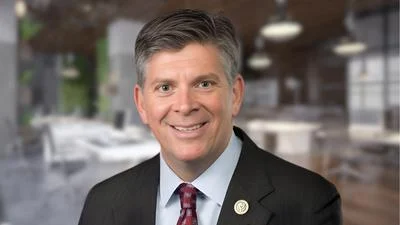Let’s start with the basic facts. Social Security has never contributed a penny to our deficit or our debt. In fact, Social Security currently has a $2.7 trillion surplus in its Trust Fund, to pay future benefits. By law, Social Security cannot deficit-spend. It can only pay out what’s in its Trust Fund.
That’s why any changes to Social Security should be solely to address its long-term challenges and safeguard it for current and future generations. Social Security’s earned benefits should not be cut in order to pay for the debts run up by tax cuts for the rich and two unpaid-for wars.
Americans overwhelmingly support Social Security and they’re counting on their elected representatives to protect it. They have heard a lot of scare talk about Social Security so sometimes their confidence fluctuates. But what’s really remarkable is that outside of Congress, an overwhelming majority of Americans support Social Security. This chart shows that going back three decades, the percentage of Americans who think we are spending the right amount (or should spend more) on Social Security is consistently at 90 percent, the same level of support Social Security had when it was enacted in 1935.
Support for Social Security is so strong that that the vast majority of Americans of all ages and political parties are willing to pay for it. A recent poll by the National Academy of Social Insurance found that 74 percent of Republicans and 77 percent of people born after 1980 said they wanted to preserve Social Security even if it meant working people would have to pay more taxes.
There’s no question that Social Security will need some changes in the future to ensure that its long-term challenges are addressed and workers receive the benefits they’ve earned.
But in the America I know, we wouldn’t start by planning to cut benefits for seniors, disabled workers, and children who’ve lost a parent. America’s workers deserve better than that.
The vast majority of Social Security recipients, both today and in the future, have very modest incomes and few resources. One out of every three Social Security beneficiaries is not a retiree - they are children who have lost a parent, widows, or workers who are so severely ill or injured they can no longer work.
For 6 out of 10 retirees, Social Security provides the majority of their income. Many retirees do not have a pension from work and lack significant savings. More than half of elderly households have no income from a pension. Only the top 20 percent of retirees get more than 10 percent of their total income from 401(k)s, IRAs or other savings and investments.
There are some who seem to suggest that deep Social Security cuts are inevitable, so we should make them now.
How discouraging, to take the easy way out and say we just have to cut back, we can’t do it. To say that America can’t afford to have a basic level of security for its retirees and families that have lost a breadwinner. To give up, and say that we can’t assure a measure of dignity to those who have worked hard all their lives, paid into Social Security, and were planning on it for retirement.
I want to show you a chart.
Here’s the average benefit Americans earn from Social Security - about $14,000 for a retiree, and a little less for a disabled worker. That’s quite a bit less than what the average worker makes - about $50,000 a year in 2011. But then look at the most fortunate, the most well-off people in society.
The top one percent of workers earned 5 times as much as the average worker - and 18 times as much as the average Social Security benefit for a retiree. When you get to the stratosphere - the top one-tenth of one percent - they made an average of 41 times what the typical Social Security retiree gets. And if you look at CEOs - we couldn’t even fit them on this chart! They made over $12 million in 2011, on average. That is 869 times what the average retiree receives from Social Security.
So I ask you - where should we start as we think about how to address Social Security’s shortfall? Should we take it from Social Security beneficiaries’ modest checks? Or should we look to those most fortunate and see if they can contribute a little more? Should we ask the widow to give up some of her modest benefits, or ask the CEO to pitch in a bit more?
Where’s the creativity? Where’s the optimism? Where is the can-do spirit that rises to the challenge? Why lead off with cuts to benefits Americans have earned, that they support and want to pay for, and that they rely on?
That’s not the America I grew up with. And that’s not the one I envision for our children and grandchildren. Social Security will face a challenge - there’s no doubt. But in the America I know and love, we can rise to this challenge.









